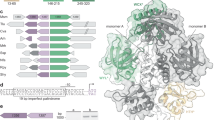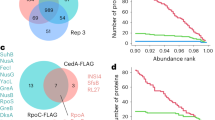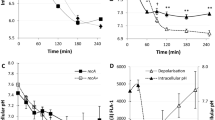Abstract.
Bacteria respond to DNA damage by mounting a coordinated cellular response, governed by the RecA and LexA proteins. In Escherichia coli, RecA stimulates cleavage of the LexA repressor, inducing more than 40 genes that comprise the SOS global regulatory network. The SOS response is widespread among bacteria and exhibits considerable variation in its composition and regulation. In some well-characterised pathogens, induction of the SOS response modulates the evolution and dissemination of drug resistance, as well as synthesis, secretion and dissemination of the virulence. In this review, we discuss the structure of LexA protein, particularly with respect to distinct conformations that enable repression of SOS genes via specific DNA binding or repressor cleavage during the response to DNA damage. These may provide new starting points in the battle against the emergence of bacterial pathogens and the spread of drug resistance among them.
Similar content being viewed by others
Author information
Authors and Affiliations
Corresponding author
Rights and permissions
About this article
Cite this article
Butala, M., Žgur-Bertok, D. & Busby, S.J.W. The bacterial LexA transcriptional repressor. Cell. Mol. Life Sci. 66, 82 (2009). https://doi.org/10.1007/s00018-008-8378-6
Published:
DOI: https://doi.org/10.1007/s00018-008-8378-6




